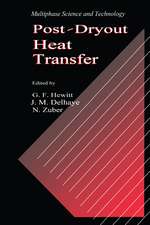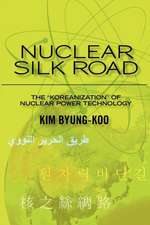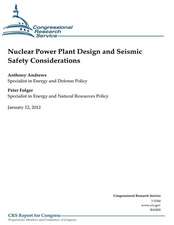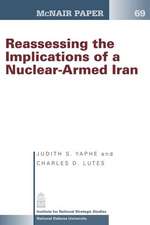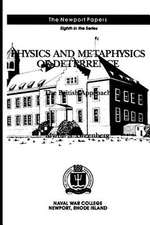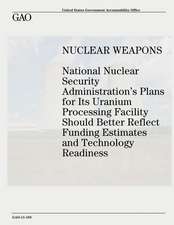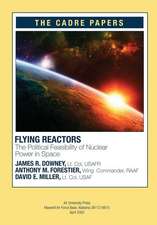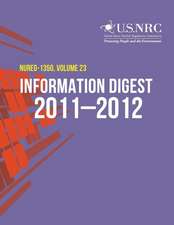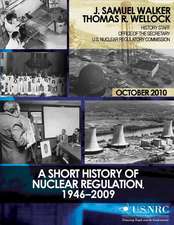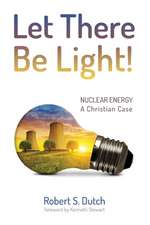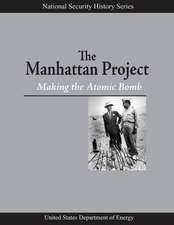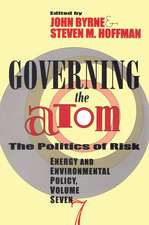Emergency Planning for Nuclear Power Plants
Autor Paul Elkmannen Limba Engleză Paperback – 13 dec 2021
Emergency Planning for Nuclear Power Plants is not intended as a guide to meeting regulatory requirements but provides an understanding of the essential concepts and language of radiological planning, so the planner can apply those concepts to their particular situation.
| Toate formatele și edițiile | Preț | Express |
|---|---|---|
| Paperback (1) | 331.94 lei 6-8 săpt. | |
| Taylor & Francis – 13 dec 2021 | 331.94 lei 6-8 săpt. | |
| Hardback (1) | 771.13 lei 6-8 săpt. | |
| Taylor & Francis – 10 ian 2017 | 771.13 lei 6-8 săpt. |
Preț: 331.94 lei
Nou
Puncte Express: 498
Preț estimativ în valută:
63.53€ • 66.08$ • 52.44£
63.53€ • 66.08$ • 52.44£
Carte tipărită la comandă
Livrare economică 15-29 aprilie
Preluare comenzi: 021 569.72.76
Specificații
ISBN-13: 9781032242279
ISBN-10: 1032242272
Pagini: 378
Dimensiuni: 178 x 254 x 20 mm
Greutate: 0.66 kg
Ediția:1
Editura: Taylor & Francis
Colecția Routledge
Locul publicării:Oxford, United Kingdom
ISBN-10: 1032242272
Pagini: 378
Dimensiuni: 178 x 254 x 20 mm
Greutate: 0.66 kg
Ediția:1
Editura: Taylor & Francis
Colecția Routledge
Locul publicării:Oxford, United Kingdom
Public țintă
Professional Practice & DevelopmentCuprins
Chapter 1: Overview and History
Chapter 2: Protective Response
Chapter 3: Core Damage and Related Concepts
Chapter 4: The Basics of Dispersion
Chapter 5: Environmental Monitoring
Chapter 6: ERO’s and ERF’s
Chapter 7: Drill and Exercise Programs
Chapter 8: The Regulatory Environment
Chapter 2: Protective Response
Chapter 3: Core Damage and Related Concepts
Chapter 4: The Basics of Dispersion
Chapter 5: Environmental Monitoring
Chapter 6: ERO’s and ERF’s
Chapter 7: Drill and Exercise Programs
Chapter 8: The Regulatory Environment
Recenzii
The book explains how certain directions taken by the U.S. Nuclear Regulatory Commission have helped shape the industry abroad. A key example is a discussion on reactor consequence analysis and the probabilistic risk assessment that is used widely across the industry. The author's focus is on U.S. regulations, although one could argue that difference in regulation today across countries is not significant, thus increasing the relevance of the book to industry emergency managers around the world.
Reviewed by Dan McArthur,asisonline
Reviewed by Dan McArthur,asisonline
Notă biografică
Mr. Elkmann has 32 years of experience in environmental and nuclear plant health physics, beginning as a Health Physics Technician supporting the remediation of sites contaminated with radioactive material. He has managed an environmental analytical radiochemistry laboratory which gave him practical experience in collecting and analyzing environmental samples (air, water, soil, etc.) for radioactive material, as well as experience in instrument calibration, radiation surveys, shipping low level radioactive waste, whole body counting (internal radioactive material), quality control, and managing a radiation protection program for employees.
In his 30 years of experience in radiological emergency preparedness, beginning as Team Leader for a State Radiological Emergency Response Team in the mid 1980’s, he worked in emergency response in the nuclear industry, in state government, and in federal government, primarily as the senior health physicist in charge of assessing the radiological consequences of accidents. Mr. Elkmann is also an expert in the environmental transport of radioactive material and in radiation dose consequence assessment and has written emergency plans and procedures, done training needs assessments, written lesson plans for training emergency responders, conducted health physics training, evaluated performance in more than 350 drills and exercises, been the lead scenario developer for numerous exercises, and contributed to regulatory documents. He currently leads assessment teams in evaluating industry performance in radiological emergency preparedness.
In his 30 years of experience in radiological emergency preparedness, beginning as Team Leader for a State Radiological Emergency Response Team in the mid 1980’s, he worked in emergency response in the nuclear industry, in state government, and in federal government, primarily as the senior health physicist in charge of assessing the radiological consequences of accidents. Mr. Elkmann is also an expert in the environmental transport of radioactive material and in radiation dose consequence assessment and has written emergency plans and procedures, done training needs assessments, written lesson plans for training emergency responders, conducted health physics training, evaluated performance in more than 350 drills and exercises, been the lead scenario developer for numerous exercises, and contributed to regulatory documents. He currently leads assessment teams in evaluating industry performance in radiological emergency preparedness.
Descriere
Provides a history of emergency planning with respect to nuclear power plant accidents from the 1950’s to the 2000’s. Gives an overview of essential concepts that a working emergency planner should know. Includes a brief overview of the health physics and plant engineering applicable to emergency planning. Each chapter covers topics unique to ra





